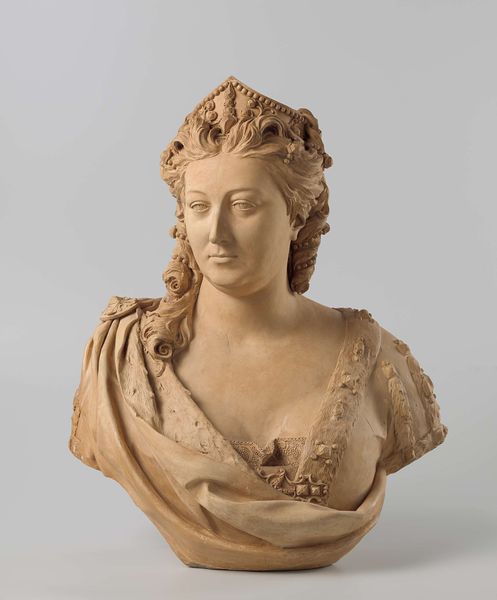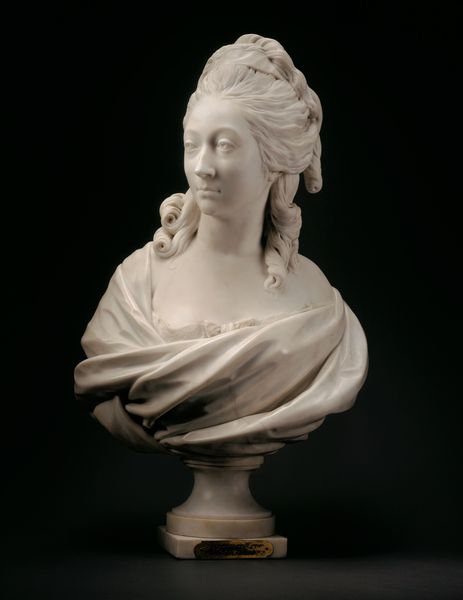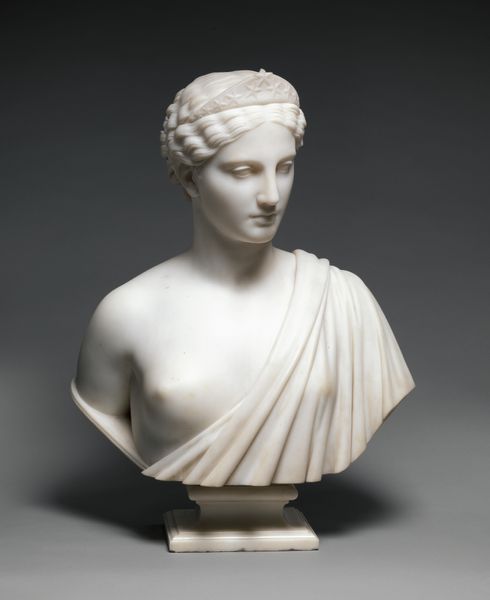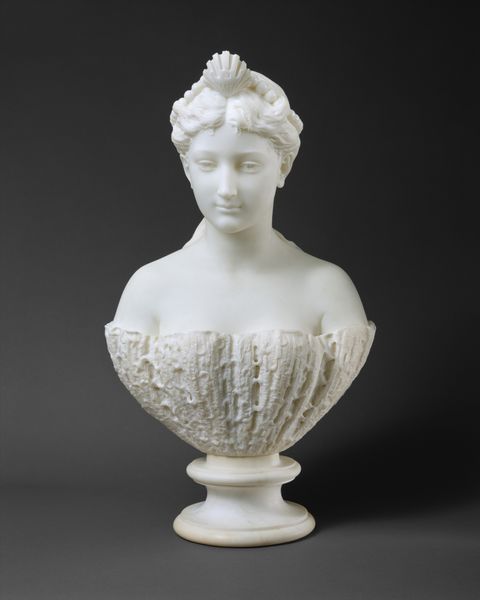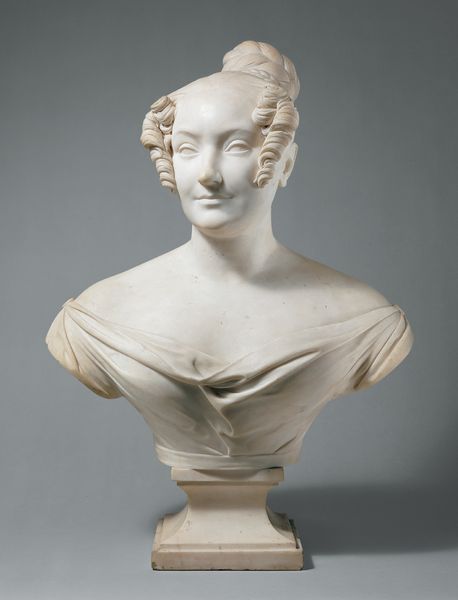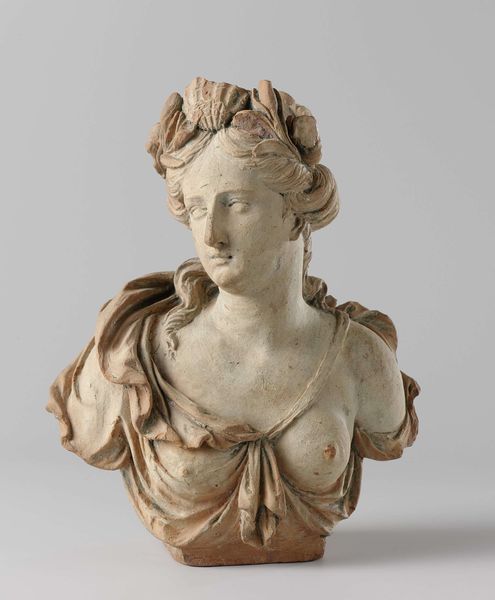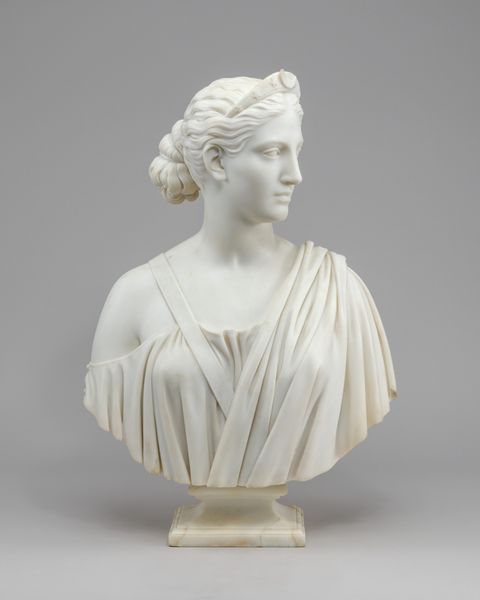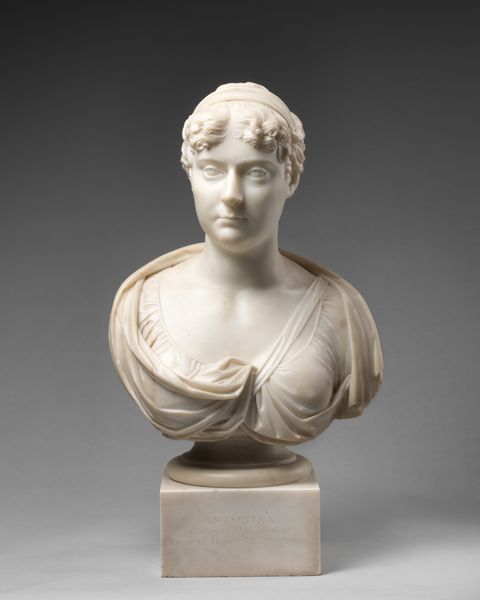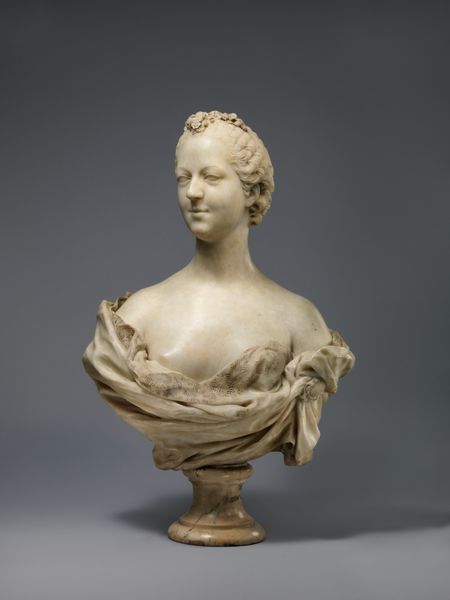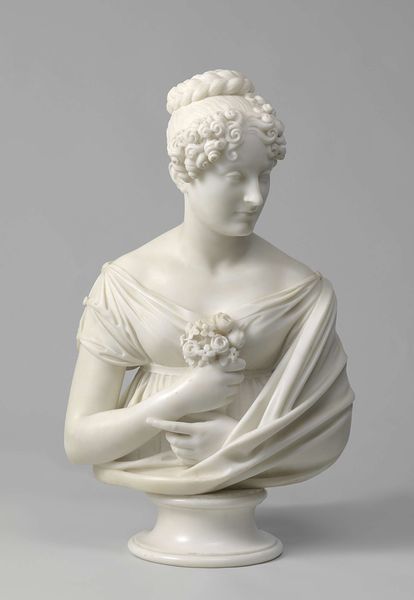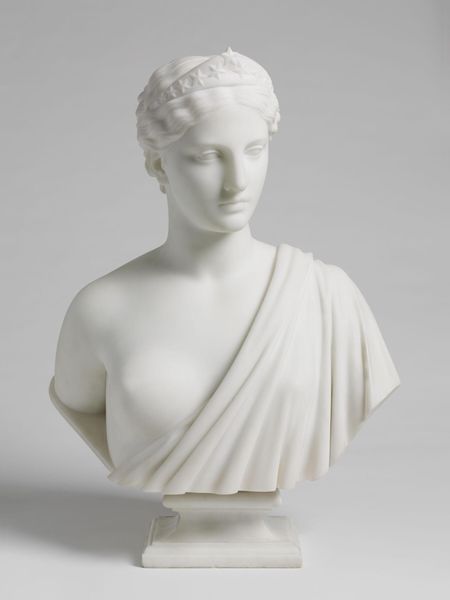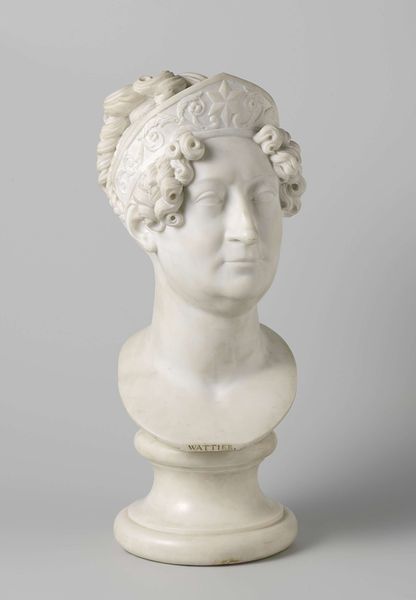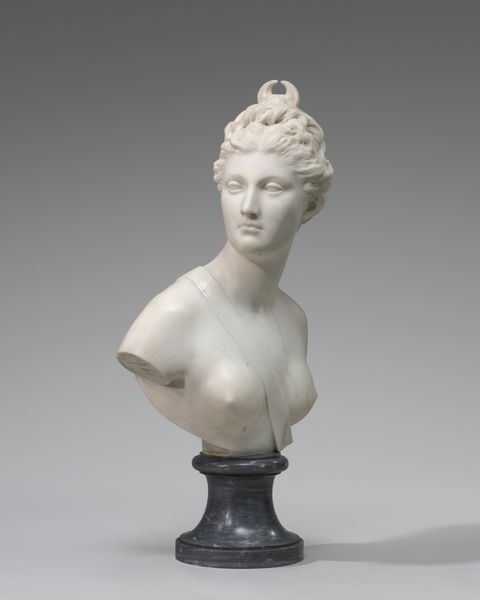
sculpture, marble
#
portrait
#
neoclacissism
#
sculpture
#
classical-realism
#
figuration
#
classicism
#
sculpture
#
decorative-art
#
marble
Dimensions: Overall (confirmed): H. 32 5/8 x W. 22 7/8 x D. 12 5/8 in. (82.9 x 58.1 x 32.1 cm)
Copyright: Public Domain
Curator: Ah, here we have Baron Franҫois Joseph Bosio's marble bust of Marie-Amélie, Queen of the French, dating from 1841. The piece is now held here at the Metropolitan Museum of Art. Editor: It strikes me immediately with this regal coolness. I mean, marble always has that reserved, untouchable quality, but her gaze… almost mournful? Though there’s undeniable strength in her posture. And what’s with the hair? Curator: The turban-like headdress and draped fabric are particularly fascinating. Bosio skillfully employs various carving techniques to create textural contrasts within the marble itself. Observe how the tightly wound curls juxtapose with the smoother planes of her face and the heavier folds of the drapery. Editor: It's really wonderful how they managed to convey such delicacy with something as solid as stone. I imagine the amount of labor involved, extracting, transporting, carving... it must have taken quite a workshop to create. But speaking of materials, what type of marble would he have likely used for something like this? Curator: Most likely Carrara marble from Italy, prized for its pure white color and consistent grain, which allowed sculptors a high degree of control in rendering fine details. The economic implications are considerable. Access to fine materials indicates prestige, supporting not only the sculptor, but quarries, merchants, transportation networks… a whole support structure for artistic creation tied directly into resources. Editor: Which makes one wonder, what was Marie-Amélie actually like? You can’t help but wonder about her private thoughts versus the face presented to the world through such carefully crafted artworks. It makes me consider her state of mind when she knew this was going to be rendered in such permanence! Talk about pressure! Curator: It also prompts a reflection on the role of the artist as a documentarian but also as a promoter. Bosio was undoubtedly aiming to please a royal patron. To capture not just a likeness, but to convey majesty, piety, and grace through very calculated artistic choices. This intertwining of power, patronage and process defines artistic creation during this time period. Editor: Indeed. Looking at the folds of her garment again, the detail makes me shiver slightly… such craftsmanship really allows the materials to talk, the stories to materialize, even now so many years later! Curator: Agreed, the dialogue extends into the present day. Through Bosio's material manipulations, Queen Marie-Amélie continues to speak.
Comments
No comments
Be the first to comment and join the conversation on the ultimate creative platform.
